In recent years, the indoor BBQ market has seen a significant surge in popularity, transforming the way we cook and enjoy meals at home. With advancements in technology and evolving consumer preferences, this trend has become more than just a fleeting fad; it’s a culinary revolution that’s reshaping the landscape of home cooking. As we delve into the intricacies of this burgeoning industry, it’s clear that indoor BBQs are not just a convenient alternative to outdoor grilling, but a testament to the innovation and creativity that drives the modern kitchen.
TheGrowingPopularityofIndoorBBQs
The Growing Popularity of Indoor BBQs
In recent years, there has been a noticeable surge in the popularity of indoor BBQs. This trend is not just a passing fad but a reflection of changing consumer habits and a deeper appreciation for the art of grilling. The reasons behind this growing interest in indoor cooking solutions are multifaceted.
One key factor is the shift towards healthier cooking methods. With health consciousness on the rise, consumers are increasingly looking for ways to enjoy their favorite grilled dishes without the added calories and fat that often come with outdoor cooking. Indoor BBQs offer a convenient and healthier alternative, allowing individuals to enjoy the taste of grilled foods without the risks associated with open flames.
The convenience factor cannot be overstated. Life in the modern world is fast-paced, and many people are looking for ways to simplify their cooking routines. Indoor BBQs provide a quick and efficient way to prepare meals, eliminating the need for outdoor setup and cleanup. Whether it’s a busy weekday or a relaxed weekend, these compact appliances fit seamlessly into the home kitchen.
In Europe, the market for indoor BBQs has seen a particular uptick. The region’s love for outdoor living has naturally translated to a desire for indoor experiences that mimic the outdoor ambiance. European consumers are drawn to smart and compact BBQs that can be easily integrated into small kitchens or urban living spaces. These appliances often come with innovative features like temperature control and adjustable heat settings, allowing for precise cooking.
Similarly, in the American market, the versatility of gas and electric BBQs has played a significant role in their popularity. Americans have a strong affinity for outdoor activities, and this has extended to their indoor cooking preferences. The ability to cook a variety of foods, from meats to vegetables, with the convenience of a controlled cooking environment has made indoor BBQs a staple in many American homes.
Technology has also played a crucial role in the growth of indoor BBQs. Innovations such as non-stick surfaces, removable cooking grids, and automatic shut-off features have made these appliances more user-friendly and safer. Moreover, the advent of smart BBQs has introduced a new level of convenience, with remote control capabilities and integration with home automation systems.
Consumer preferences have evolved alongside these technological advancements. There is a growing demand for customization and personalization in kitchen appliances. Consumers are looking for BBQs that not only cook food but also add a touch of personal style to their kitchen. This has led to a variety of designs, from sleek stainless steel models to those with unique, artistic finishes.
Despite the convenience and health benefits, there are challenges that the indoor BBQ market must address. Safety regulations are a major concern, especially as these appliances often involve heat and flames. Manufacturers must ensure that their products meet stringent safety standards to gain consumer trust.
Moreover, the market expansion into emerging urban areas presents new opportunities but also unique challenges. As more people move to cities, the demand for compact, efficient cooking solutions increases. However, urban kitchens often have limited space, which requires manufacturers to create even more innovative and space-saving designs.
The success of indoor BBQ brands lies in their ability to understand these market dynamics and adapt accordingly. Brands that focus on quality, safety, and innovation are likely to capture the attention of consumers. Case studies of successful brands often reveal a strategic approach to market penetration, coupled with a clear understanding of what their target audience values.
Looking ahead, the future of indoor BBQs looks promising. Market growth projections indicate a steady increase in demand, driven by consumer preferences and technological advancements. The potential for new applications and uses is vast, with possibilities ranging from multi-functional cooking surfaces to integrated cooking systems that can handle a variety of cooking methods.
In conclusion, the growing popularity of indoor BBQs is a testament to the changing landscape of home cooking. As consumers continue to seek healthier, more convenient, and technologically advanced cooking solutions, indoor BBQs are poised to become an integral part of modern home kitchens.
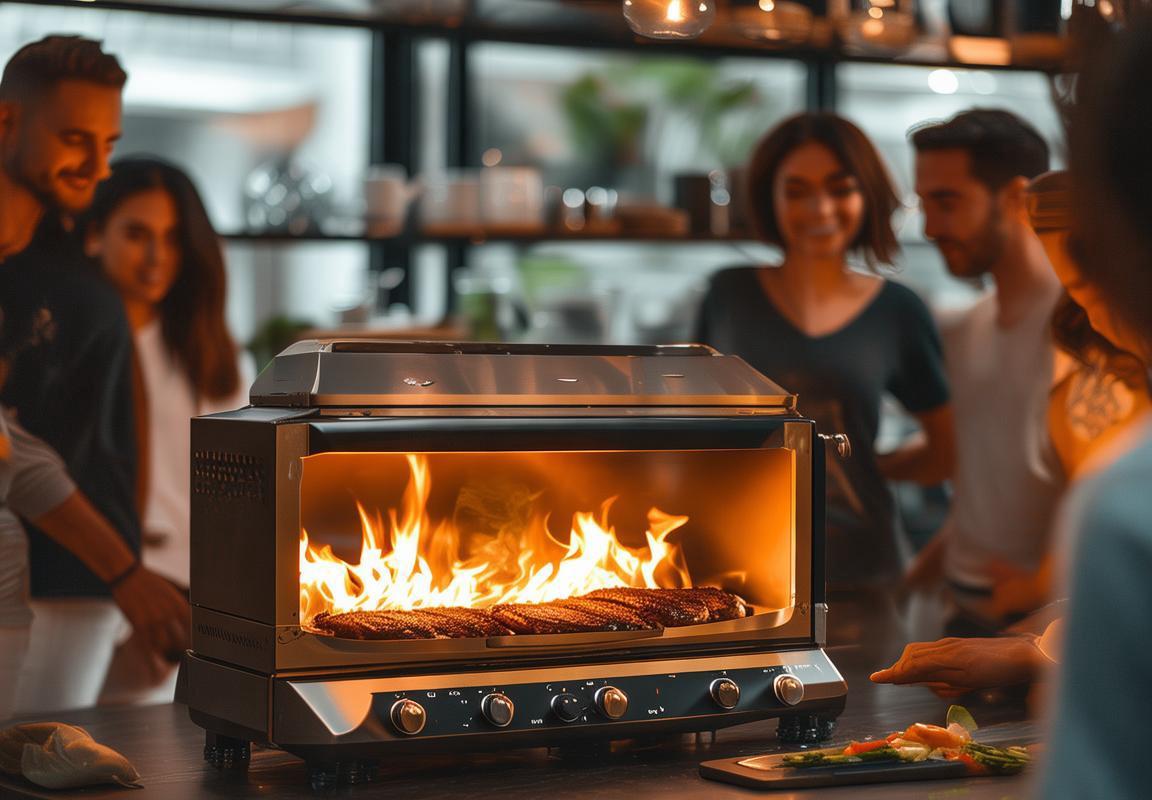
EuropeanMarketDynamics
In Europe, the culinary landscape is undergoing a significant transformation, with indoor BBQs emerging as a trendy and practical addition to modern kitchens. This shift is driven by a variety of factors, reflecting the evolving tastes and lifestyles of consumers across the continent.
The urbanization of European cities has led to smaller living spaces, yet a strong desire for outdoor cooking experiences. This has created a niche market for compact and efficient indoor BBQs that can be easily integrated into urban homes. As a result, European manufacturers are responding with innovative designs that cater to this demand.
Sustainability is another key driver in the European market. Eco-friendly features, such as induction burners that offer precise temperature control and reduce energy consumption, are becoming increasingly popular. Consumers are not only looking for products that enhance their cooking experience but also those that align with their environmental values.
The integration of smart technology is also reshaping the indoor BBQ market. European brands are incorporating digital interfaces and connectivity, allowing users to monitor and control their cooking process remotely. This not only adds convenience but also a sense of security, as users can ensure their food is being cooked to perfection even when they are away from the kitchen.
Health and wellness are at the forefront of European consumers’ minds, and this is reflected in the rise of indoor BBQs that offer healthier cooking options. With concerns over the use of fats and oils, indoor grills that allow for direct contact cooking are gaining traction. These appliances help to reduce the amount of fat in the food, making them a healthier choice for health-conscious consumers.
The European market is also seeing a surge in the use of hardwood charcoal grills. There’s a growing appreciation for the rich flavors that come from charcoal, and these grills are becoming more accessible and compact, making them a favorite among enthusiasts and novices alike.
In terms of demographics, the younger generation is driving the popularity of indoor BBQs. Millennials and Gen Zers are more likely to embrace new technologies and cooking methods that provide a sense of adventure and social connection. These demographics are also more inclined to share their culinary creations on social media, which has helped to propel indoor BBQs into the spotlight.
Another interesting trend in the European market is the customization of indoor BBQs. Brands are offering a variety of add-ons and attachments, allowing consumers to tailor their grills to their specific needs and preferences. From different grill plates to smoking capabilities, the options are endless, catering to the diverse tastes and cooking styles of European consumers.
The competition in the European indoor BBQ market is fierce, with both established brands and new entrants vying for market share. This competition is driving innovation, with manufacturers constantly seeking to outdo each other with new features and designs. The result is a wide array of options that cater to every budget and cooking level.
Lastly, the European market is not without its challenges. The need for compliance with strict safety regulations is a constant concern, and manufacturers must ensure their products meet these standards without compromising on quality or innovation. However, the market’s growth potential remains strong, with a growing number of consumers looking for convenient, sustainable, and healthy cooking solutions.
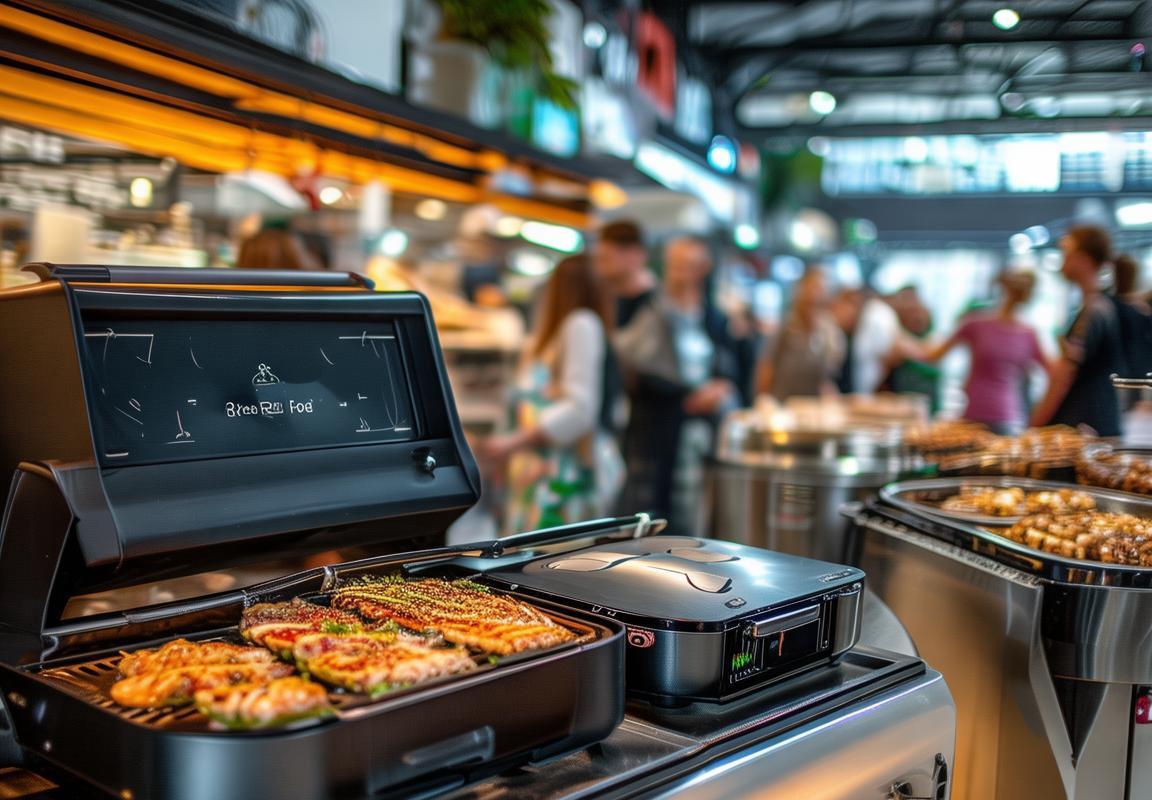
AmericanMarketTrends
The American market for indoor BBQs has witnessed a remarkable evolution, reflecting changing consumer preferences and lifestyles. Here’s a closer look at the trends shaping this sector.
Culinary enthusiasts are increasingly embracing the versatility of indoor BBQs. Once confined to outdoor patios, these appliances are now a staple in many kitchens, offering a convenient way to enjoy the taste of grilled food year-round. From apartments to suburban homes, the demand for indoor BBQ solutions is on the rise.
Gone are the days when indoor BBQs were just about cooking burgers and hot dogs. Modern units now feature a variety of cooking surfaces, including ceramic, stone, and cast iron grills, each designed to mimic the authentic flavors of outdoor grilling. This expanded functionality caters to a more diverse range of recipes and cooking techniques.
Gas and electric indoor BBQs dominate the American market, with gas models leading the pack. The convenience of quick ignition and precise temperature control makes gas BBQs a favorite among busy households. Electric BBQs, on the other hand, are a great option for those without outdoor gas connections or those looking for a quieter cooking experience.
As Americans continue to prioritize health and wellness, indoor BBQs are being integrated into diets in new ways. The ability to cook lean proteins, vegetables, and whole grains without the addition of excess fats has made indoor BBQs a healthy cooking choice. This trend is supported by the increasing number of models featuring non-stick surfaces and easy-to-clean designs.
Outdoor lifestyle influencers have also played a significant role in shaping the American indoor BBQ market. With the popularity of grilling as a social activity, many consumers are seeking to recreate this experience indoors. Indoor BBQs that offer multi-zone cooking, allowing for simultaneous preparation of different foods, are becoming increasingly popular.
Technology has not been left behind in the American indoor BBQ market. Smart BBQs with Wi-Fi connectivity are now available, allowing users to monitor and control their grills remotely. These features, along with programmable settings and integrated temperature sensors, provide peace of mind and precision in cooking.
Demographics are also influencing market trends. Younger generations, who grew up with technology at their fingertips, are driving the demand for smart and easy-to-use indoor BBQs. Brands that can offer intuitive interfaces and user-friendly features are more likely to capture this market segment.
Eco-conscious consumers are another driving force in the American indoor BBQ market. With the emphasis on sustainability, many manufacturers are now producing BBQs made from recycled materials or offering energy-efficient options. This eco-friendly approach resonates with environmentally conscious consumers and is contributing to the growth of the market.
The American indoor BBQ market is not without its challenges. The high cost of certain high-tech models and the need for improved indoor ventilation can be barriers to wider adoption. However, innovation in design and pricing is likely to address these concerns, further propelling the market forward.
As the market continues to evolve, we can expect to see a greater focus on integration with other kitchen appliances, such as ovens and refrigerators. Brands that can offer a seamless indoor cooking experience, from prepping to plating, will likely stand out in a crowded market.
The American indoor BBQ market reflects the dynamic nature of the country’s culinary scene. With a growing emphasis on convenience, health, and technology, indoor BBQs are becoming an indispensable part of many kitchens. As long as these appliances can keep pace with changing consumer needs, their popularity is poised to remain strong.
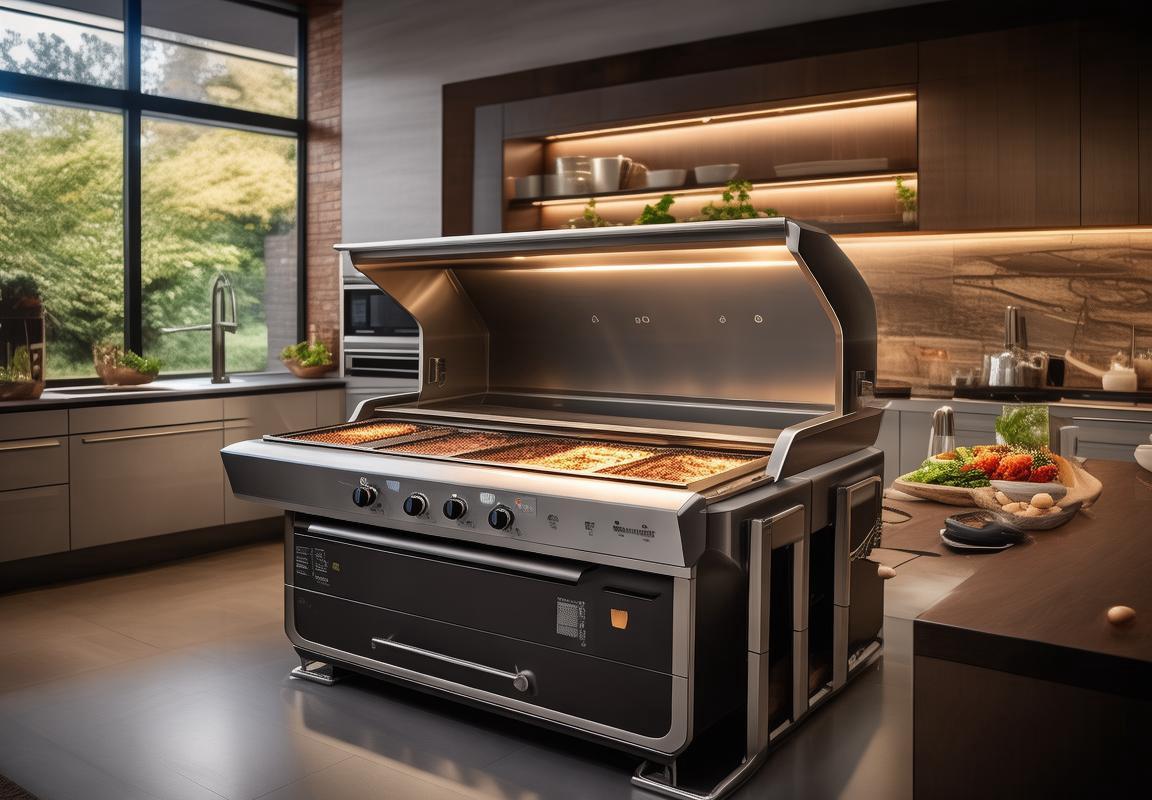
TechnologicalAdvancements
In recent years, the kitchen appliance industry has witnessed a remarkable surge in technological advancements, particularly in the realm of indoor grilling. From smart features to eco-friendly innovations, these developments are reshaping the way we cook at home.
The integration of IoT (Internet of Things) technology has brought a new level of connectivity to indoor BBQs. Users can now control their grills remotely through smartphones or tablets, adjusting temperatures and timers with ease. This level of convenience is particularly appealing to busy professionals and families who want to enjoy the taste of grilled food without the hassle of constant monitoring.
Energy efficiency has become a cornerstone of modern kitchen appliances, and indoor BBQs are no exception. New models are equipped with energy-saving features that reduce power consumption without compromising on performance. For instance, some grills use induction technology to heat up faster and maintain a consistent temperature, ensuring that food is cooked evenly without wasting energy.
Safety has always been a top priority, and technological advancements have introduced new safety features to indoor BBQs. Automatic shut-off mechanisms are now standard in many models, which turn off the grill if it’s left unattended or if the temperature exceeds safe levels. Additionally, non-stick surfaces and easy-to-clean designs have made these appliances safer and more user-friendly.
The rise of smart grilling has also led to the development of a variety of smart features. Grills with built-in sensors can monitor food temperature and provide real-time feedback, ensuring that the perfect level of doneness is achieved every time. Some models even come with recipe suggestions and cooking guides, making it easier for novices to master the art of grilling.
Another significant technological trend is the use of alternative fuels. While gas and electric grills remain popular, there’s a growing interest in charcoal and wood-fired BBQs. New innovations include charcoal grills with automatic lighting systems and wood-fired grills that offer precise control over the heat and smoke levels.
The design of indoor BBQs has also evolved to cater to the modern aesthetic. Sleek, modern designs with stainless steel and glass are becoming more common, fitting seamlessly into contemporary kitchen decor. The emphasis on aesthetics doesn’t compromise functionality; these grills are still built to withstand the demands of regular use.
In terms of materials, there’s a shift towards sustainability. Recycled materials and eco-friendly components are being used in the construction of new BBQs, aligning with the growing consumer demand for environmentally responsible products. This not only reduces the carbon footprint but also extends the life of the appliance.
The rise of social media and cooking shows has also influenced technological advancements in the indoor BBQ market. Chefs and culinary influencers are pushing the boundaries of what’s possible with indoor grilling, leading to the development of more sophisticated and versatile appliances. These influencers often collaborate with manufacturers to create signature lines that appeal to their followers.
Lastly, the customization of indoor BBQs has become a significant trend. Users can now choose from a variety of add-ons and attachments, such as infrared burners, rotisseries, and smoking boxes, to tailor their grills to their specific needs and preferences. This level of personalization has opened up new possibilities for home cooks and enthusiasts alike.
In conclusion, the technological advancements in indoor BBQs are transforming the way we cook at home. From smart features and energy efficiency to safety and sustainability, these innovations are making indoor grilling more accessible, enjoyable, and convenient than ever before. As the market continues to evolve, we can expect even more exciting developments that will further enhance our grilling experiences.
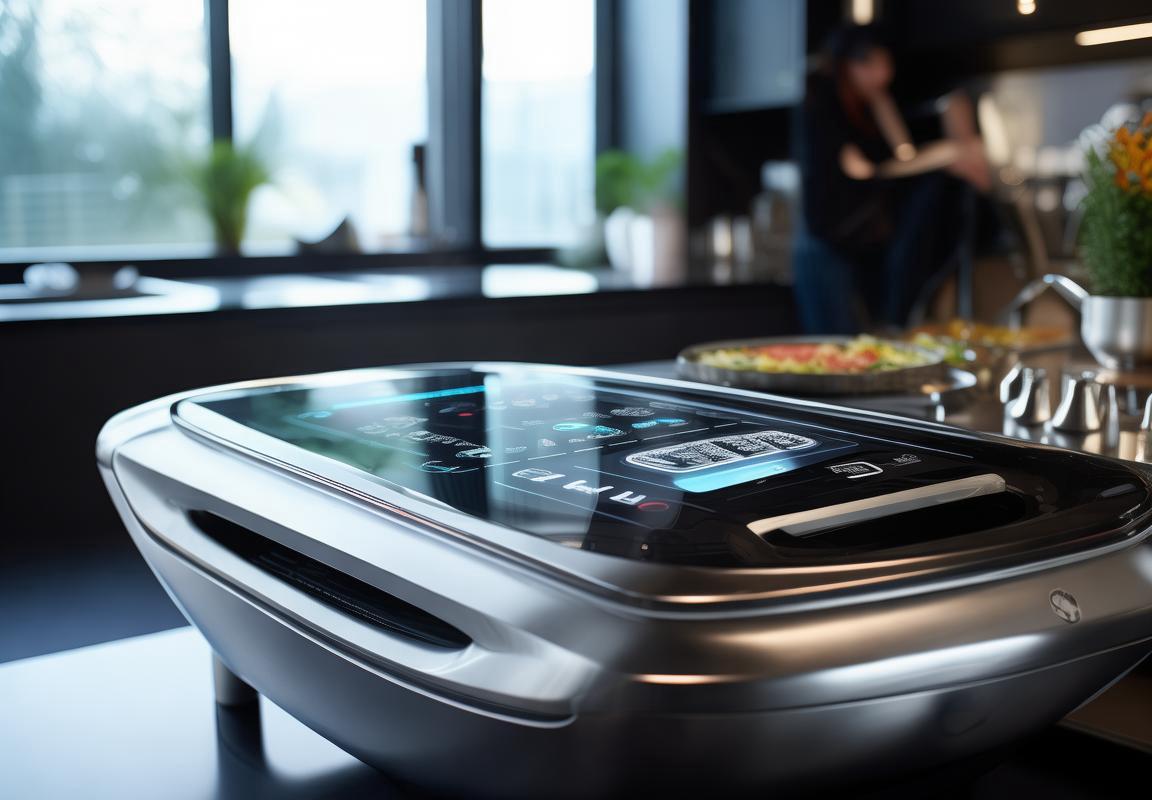
ConsumerPreferencesandDemographics
In the ever-evolving landscape of consumer preferences, the demand for convenience and innovation has surged, particularly in the realm of kitchen appliances. This shift is evident in the way consumers, especially younger demographics, are gravitating towards specific features and functionalities. Let’s delve into the nuanced preferences and demographic trends shaping the market.
The surge in urban living has led to a preference for compact, multi-functional appliances. Smaller spaces necessitate appliances that can serve multiple purposes without overwhelming the kitchen area. Consumers are now looking for products that can be easily stored and utilized efficiently, reflecting a need for space-saving solutions.
Millennials and Gen Z, known for their tech-savviness, are driving the trend towards smart kitchen gadgets. These tech-savvy generations are not just interested in the cooking aspect; they want appliances that integrate with their smart home systems, offering connectivity and control through their smartphones or voice assistants. The desire for a seamless, integrated kitchen experience is on the rise.
Eco-consciousness is another significant factor influencing consumer preferences. With growing environmental concerns, there’s a heightened interest in appliances that are energy-efficient and sustainable. Consumers are increasingly seeking out appliances that use less energy, have recyclable materials, and contribute to a lower carbon footprint.
Customization has become a key driver in the appliance market. Consumers no longer want one-size-fits-all solutions; they are looking for appliances that can be tailored to their specific needs and preferences. This includes everything from adjustable settings on ovens and cooktops to modular designs that can be adapted as cooking habits change over time.
Health and wellness are at the forefront of consumer minds, and this is reflected in the kitchen appliance market. There’s a growing trend towards appliances that facilitate healthier cooking methods, such as air fryers and steam ovens, which offer healthier alternatives to deep-frying and excessive oil use. Consumers are also interested in appliances that provide nutritional information or help in meal planning.
Demographic shifts, such as the aging population, are also influencing appliance preferences. As people age, they often seek appliances that are easier to use, with features like larger buttons, voice-activated controls, and ergonomic designs. The need for appliances that support independent living is becoming more pronounced.
In terms of demographics, there’s a notable trend among single-person households. These consumers often prefer smaller, more affordable appliances that meet their basic needs without the added cost and space requirements of larger units. The rise of the “lone cook” is driving the demand for compact, yet powerful, appliances.
The diverse ethnic backgrounds of today’s consumers are also shaping preferences. International flavors are becoming more common in home cooking, leading to a demand for appliances that can handle a wide range of culinary techniques and ingredients. From Indian curry cookers to Japanese rice cookers, there’s a growing interest in appliances that cater to specific cultural cuisines.
In the world of consumer preferences and demographics, the kitchen appliance market is witnessing a confluence of trends. The need for convenience, smart technology, sustainability, customization, health, and ease of use is creating a dynamic landscape that appliance manufacturers must navigate to meet the evolving demands of their customers. By understanding these trends, companies can develop products that not only meet functional needs but also resonate with the values and lifestyles of today’s consumers.
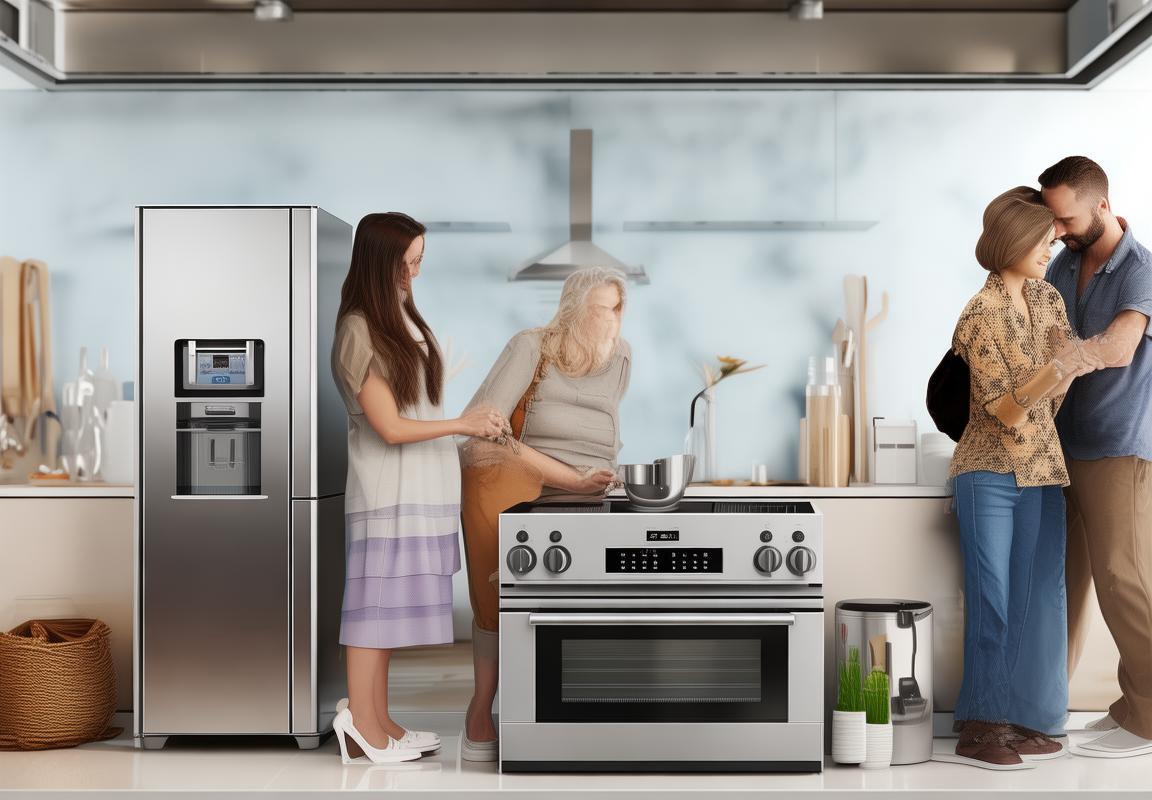
ChallengesandOpportunities
In the ever-evolving landscape of the indoor BBQ market, challenges and opportunities often go hand in hand. Here’s a closer look at the multifaceted nature of these hurdles and the possibilities they present:
The surge in health consciousness has led to a demand for cooking methods that minimize oil and fat, yet still deliver flavor. Indoor BBQs are stepping in to fill this niche, offering a healthier alternative to traditional cooking methods. However, ensuring that these appliances don’t compromise on taste remains a significant challenge for manufacturers.
Consumer lifestyles are changing rapidly, with more people working from home and seeking convenience. This shift has opened up opportunities for indoor BBQs to cater to those who want to enjoy the barbecue experience without the outdoor hassle. But the challenge lies in creating products that can be easily integrated into small kitchen spaces.
As the market grows, safety regulations become more stringent. Ensuring that indoor BBQs are flame-free, electric, and gas-efficient while adhering to safety standards is a challenge that must be met. However, it also presents an opportunity for innovation, as companies can develop new safety features that appeal to cautious consumers.
The integration of smart technology in indoor BBQs has been a game-changer. Users can now control their grills remotely, monitor cooking times, and even receive notifications about food readiness. While this adds complexity to the manufacturing process, it also creates a unique selling point that can attract tech-savvy consumers.
Environmental concerns are increasingly influencing purchasing decisions. Consumers are looking for eco-friendly options, which means manufacturers need to consider the materials used in their products and the appliances’ energy efficiency. This challenge is also an opportunity to tap into the green market and appeal to environmentally conscious consumers.
Diverse cooking styles and preferences are another challenge, as manufacturers must cater to a wide range of tastes and dietary requirements. The opportunity here is to offer a variety of grill designs and attachments that can handle different types of food, from vegetables to meats, and even seafood.
The global supply chain disruptions have posed a significant challenge, affecting the availability and cost of raw materials. Companies that can maintain a stable supply chain or find alternative sources have an advantage. This situation also offers an opportunity to explore local sourcing and reduce dependency on international markets.
In the realm of distribution, the rise of e-commerce has opened new channels for indoor BBQ manufacturers. While navigating the complexities of online sales can be challenging, it also provides a vast platform to reach a broader audience and increase brand visibility.
The competition is fierce, with numerous brands vying for market share. Standing out in this crowded space requires innovative marketing strategies and a strong understanding of consumer needs. The opportunity is to differentiate products through unique features, superior customer service, and a compelling brand story.
Lastly, the challenge of consumer education cannot be overlooked. Many consumers are unfamiliar with the indoor BBQ experience and its benefits. Educating the market about the convenience and health aspects of these appliances can lead to increased adoption rates and sales. This educational opportunity can also help shape the future of the industry, as consumer awareness grows.

CaseStudies:SuccessfulIndoorBBQBrands
In the competitive landscape of indoor BBQs, several brands have managed to carve out a niche for themselves, offering unique features and experiences. Let’s take a look at a few case studies of successful indoor BBQ brands and what makes them stand out.
-
Brand X’s Commitment to Eco-Friendly DesignBrand X has gained a loyal following by integrating eco-friendly materials and energy-efficient designs into their indoor BBQs. Their commitment to sustainability is evident in the use of recycled steel and wood, as well as the incorporation of efficient burners that reduce energy consumption.
-
Brand Y’s Innovative Cooking TechnologyBrand Y has revolutionized the indoor BBQ market with their innovative cooking technology. Their products feature adjustable heat zones and multi-level cooking grates, allowing for precise temperature control and versatile cooking options. This has made them a favorite among culinary enthusiasts who appreciate the ability to sear, grill, and bake all in one appliance.
-
Brand Z’s User-Friendly InterfaceBrand Z has made a name for itself by focusing on user-friendliness. Their indoor BBQs come with intuitive interfaces and easy-to-follow digital displays, making them accessible to both novices and seasoned chefs. The brand’s emphasis on simplicity has attracted a wide range of consumers looking for a hassle-free cooking experience.
-
Brand AA’s Customization OptionsFor those who prefer a personalized approach, Brand AA offers a variety of customization options. From different sizes and shapes to a wide array of colors and finishes, customers can tailor their indoor BBQs to match their kitchen decor. This level of customization has helped the brand appeal to a diverse customer base.
-
Brand BB’s Integration with Smart Home SystemsBrand BB has taken the indoor BBQ experience to a new level by integrating their products with smart home systems. Users can control their BBQs remotely via smartphone apps, adjusting temperatures and timers from anywhere. This feature has made Brand BB a popular choice among tech-savvy consumers.
-
Brand CC’s Focus on Safety FeaturesSafety is a top priority for Brand CC, and their indoor BBQs are equipped with a range of features to prevent accidents. From child locks to automatic shut-off mechanisms, these safety features give peace of mind to homeowners. Brand CC’s dedication to safety has helped establish them as a trusted name in the industry.
-
Brand DD’s Global Expansion StrategyBrand DD has successfully expanded its market reach through strategic partnerships and international marketing campaigns. By adapting their products to meet the specific needs and preferences of different regions, Brand DD has become a recognizable brand across the globe.
-
Brand EE’s Community EngagementBrand EE has fostered a strong community around their brand by hosting cooking competitions, sharing recipes, and encouraging user-generated content. This engagement has not only helped to build brand loyalty but has also created a sense of belonging among their customers.
-
Brand FF’s Quality Assurance ProgramBrand FF stands out for its rigorous quality assurance program, ensuring that each indoor BBQ meets high standards of performance and durability. This commitment to quality has earned them a reputation for reliability, making them a go-to brand for long-lasting cooking appliances.
-
Brand GG’s Strategic Marketing ApproachFinally, Brand GG has leveraged social media and influencer partnerships to create a strong brand identity. By showcasing the versatility and convenience of their indoor BBQs, they have successfully reached a wide audience and generated buzz around their products.
These case studies highlight the diverse strategies that successful indoor BBQ brands employ to stand out in a crowded market. From focusing on eco-friendliness to embracing technology and community engagement, these brands have found unique ways to capture the hearts and minds of consumers.
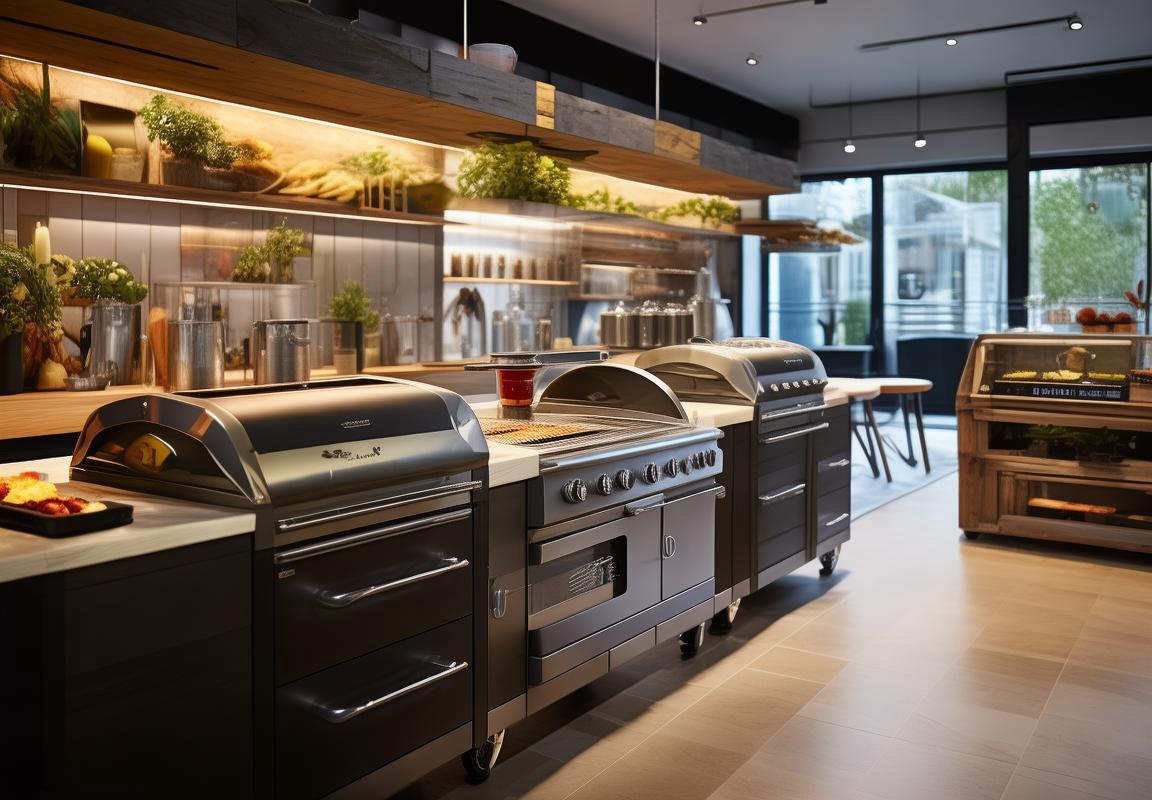
FutureOutlook:PredictionsfortheIndoorBBQIndustry
In the ever-evolving landscape of the indoor BBQ industry, brands are not just selling products; they are offering a lifestyle. Here are a few case studies that showcase how successful indoor BBQ brands have navigated the market, carving out their niche with innovative strategies and customer-centric approaches.
The brand known as “GrillMaster” has gained traction by focusing on the versatility of their indoor grills. Their product range includes compact grills designed for small kitchens and high-end models that cater to the cooking enthusiast looking for a professional-grade experience at home. The brand’s success lies in their ability to offer customization options, allowing customers to choose the size, features, and even the material of their grill.
Another standout is “CharcoalChef,” which has made a name for itself by emphasizing the authentic charcoal flavor. Their indoor smokers have become a hit with consumers who crave the rich taste of traditional outdoor BBQs. The brand has managed to replicate the smoking process indoors, using advanced technology to maintain the perfect temperature and humidity levels, ensuring that every dish cooked is as flavorful as if it were prepared outdoors.
“CityGrill” has taken the concept of indoor BBQs a step further by integrating smart technology. Their grills come with digital temperature controls, Bluetooth connectivity for remote monitoring, and even a recipe suggestion feature. This brand has tapped into the tech-savvy demographic, offering a seamless fusion of cooking and technology.
“QuickCook BBQ” has capitalized on the busy lifestyle of modern consumers by focusing on convenience. Their indoor grills are designed for quick and easy cooking, with features like a fast heat-up time and detachable cooking plates for easy cleaning. This brand has become a go-to for those who want to enjoy a BBQ without the time commitment.
“FlavorForge” has distinguished itself by specializing in grill covers and accessories. Understanding that the outdoor experience is incomplete without the right tools, this brand offers a wide range of covers, racks, and tools that enhance the cooking experience. Their innovative designs have not only protected grills from the elements but also added a touch of style to outdoor cooking setups.
Each of these brands has managed to carve out a unique position in the market, but they also share common strategies that have contributed to their success:
-
Market Research: They listen to their customers and stay updated on emerging trends. This has allowed them to anticipate market needs and develop products that meet those demands.
-
Quality and Innovation: They prioritize quality in their manufacturing process and are not afraid to invest in research and development to create innovative features.
-
Customer Experience: From the initial interaction with a product to the after-sales service, these brands focus on creating a positive experience for their customers.
-
Brand Storytelling: They have compelling brand stories that resonate with consumers, whether it’s the passion for cooking, the quest for flavor, or the convenience of modern living.
-
Marketing and Distribution: They employ effective marketing strategies to reach their target audience and have strong distribution channels that ensure their products are accessible.
As the indoor BBQ industry continues to grow, these case studies serve as a testament to the potential for success when a brand aligns its offerings with consumer preferences and market dynamics. By focusing on quality, innovation, and customer satisfaction, these brands have not only become successful in their own right but have also inspired others to enter the market with products that cater to the diverse needs of today’s consumers.
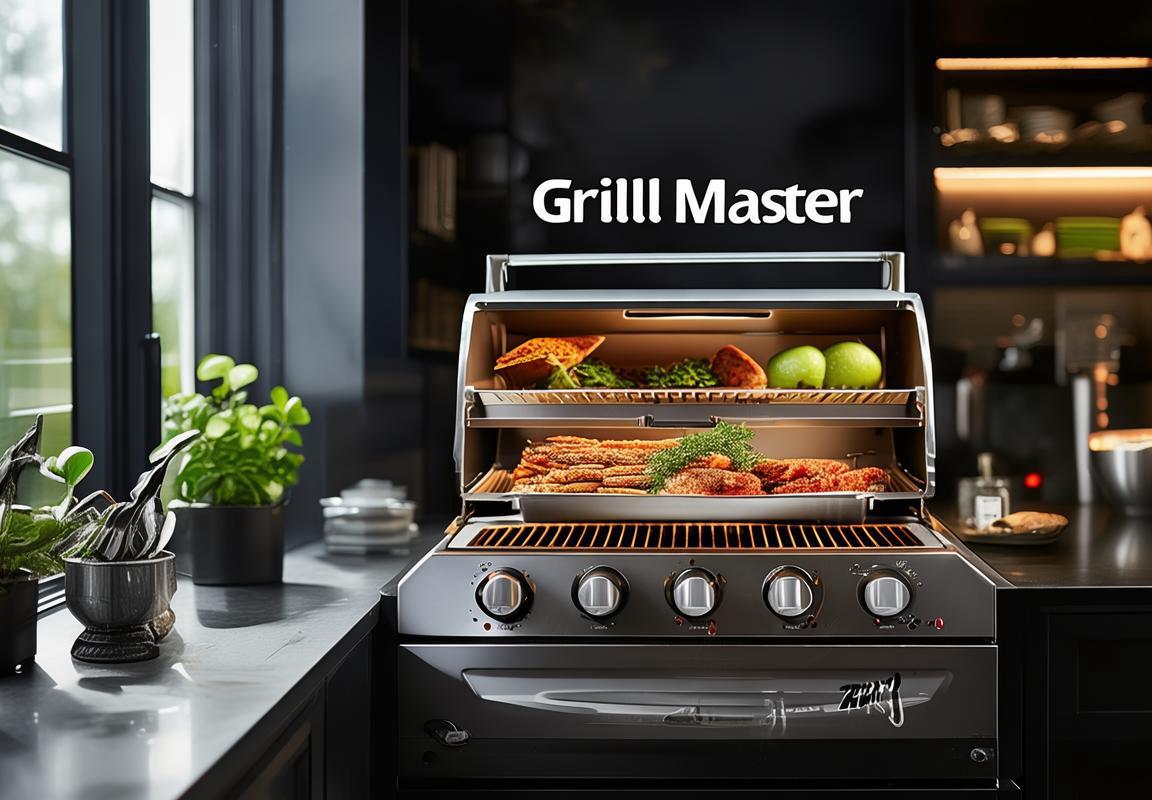
Conclusion
In the evolving landscape of indoor cooking, the convenience and allure of indoor BBQs have become increasingly appealing to consumers. As we delve into the future of this niche market, it’s clear that several factors will shape its trajectory. From advancements in technology to shifts in consumer preferences, the indoor BBQ industry is poised for a dynamic future.
Consumer expectations are rapidly changing, with a growing emphasis on health, convenience, and sustainability. As such, the industry must adapt to these demands to remain relevant. One prediction is the rise of smart BBQs that can be controlled remotely through apps, offering users the ability to monitor and adjust cooking temperatures and times from their smartphones. This integration of technology with everyday appliances reflects a broader trend towards home automation and control.
Moreover, the industry is likely to see a surge in eco-friendly and energy-efficient BBQ options. With environmental concerns at the forefront of consumer consciousness, manufacturers are expected to invest in more sustainable materials and energy-saving features. This shift will not only align with consumer values but also contribute to reducing the carbon footprint of indoor cooking.
Another prediction involves the expansion of indoor BBQs into niche markets. While traditional outdoor enthusiasts may already be familiar with the concept, there is a vast untapped potential among urban dwellers and those with limited outdoor space. The industry could see a rise in compact, countertop models designed for small kitchens and urban apartments, making the BBQ experience accessible to a wider audience.
The rise of health-conscious cooking trends is also set to influence the future of indoor BBQs. Consumers are increasingly seeking out cooking methods that are healthier than traditional frying or grilling, which can lead to a demand for BBQs that offer alternative cooking surfaces or innovative features that minimize the need for added fats and oils. This could open up opportunities for new products that cater to the health-conscious consumer, such as BBQs with non-stick surfaces or integrated fat draining systems.
Additionally, there’s a potential for cross-industry collaboration. BBQ manufacturers might team up with kitchen appliance companies to create integrated cooking systems that offer a seamless cooking experience. For example, a BBQ that can be used in conjunction with a slow cooker or a smoker could offer users a wide range of cooking options within a single appliance.
As the industry grows, there will also be challenges to overcome. Safety regulations, particularly in relation to gas appliances, will continue to be a significant concern. Ensuring that indoor BBQs meet these standards while also providing the convenience and functionality that consumers desire will be a delicate balance for manufacturers.
Moreover, the global supply chain disruptions have highlighted the importance of local production and sourcing. The industry may see a shift towards regional manufacturing to reduce dependency on international supply lines and to respond more quickly to market demands.
In conclusion, the future of the indoor BBQ industry is bright, with a multitude of opportunities on the horizon. As consumer preferences evolve, so too will the products and services offered by the industry. By embracing technological advancements, focusing on health and sustainability, and adapting to the needs of a diverse consumer base, indoor BBQ manufacturers can look forward to a future filled with innovation and growth.